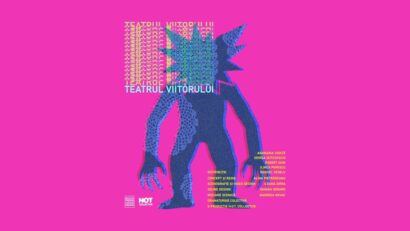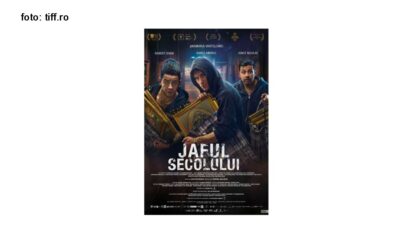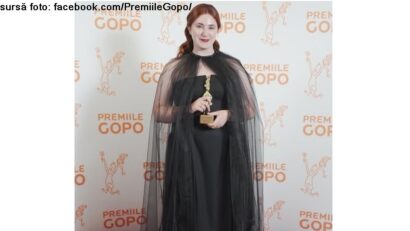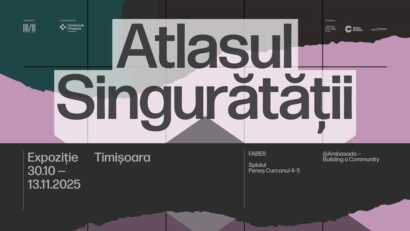The UNESCO Patrimony in Romania
The launch of the volume titled 'Explaining the UNESCO Patrimony in Romania to Everyone'
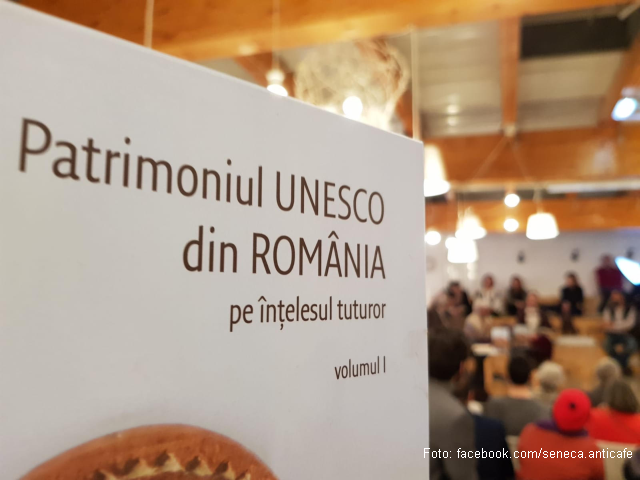
Monica Chiorpec, 11.01.2020, 14:59
Seneca AntiCafe in Bucharest hosted the launch of a volume titled Explaining the UNESCO Patrimony in Romania to Everyone, financed by the Order of Architects of Romania, and Ilfov County Council through its Center for the Conservation and Promotion of Traditional Culture. This collaboration between a number of professionals and lovers of heritage culture in Romania and the Republic of Moldova resulted in an original volume, mainly with its exoteric discourse. Here with details is ethnologist Ioana Popescu:
“I tried to make this volume on heritage easily understood by everyone. Therefore I can now speak on behalf of everyone. I think the title is very appropriate, and that the volume meets very well this requirement of being for everyone, young and old, experts and people interested in cultural heritage, or just people in the street who may see the book in a store window.”
The concept of the book belongs to art historian Adriana Scripcariu, who was joined as co-authors by ethnologist Silvestru Petac from the Ethnography Museum of Transylvania in Cluj, and by Ana Iuga of the Bucharest Museum of the Romanian Peasant. The three took a fresh approach on the phenomenon of the emergence of a cultural patrimony. Here is Ioana Popescu once again:
“People keep talking about a cultural patrimony, more and more often, on the radio, TV, on Facebook, they talk about cultural heritage research, be it for museums, be it material, immaterial, mobile, immobile, or natural. What is generally understood by patrimonial research is the documentation of each item of this treasure. The documentation is done to put together an item card: the name of the item, of the author, if the case may be, the shape, the material, the technical details, the state of conservation, dimensions, but with much less emphasis on the context of its appearance, of its use, and the presence of similar pieces.”
The volume Explaining the UNESCO Patrimony in Romania to Everyone speaks concisely and honestly about all that makes up a major treasure for Romania, making connections and references to the patrimonial importance of a certain referent:
“What makes this first volume important is precisely the fact that it brings together connected, contextual information, sometimes very remote from the representation of the item itself in this volume, explanations of the terms used, quotes which are not necessarily from experts, but from texts by important Romanian personalities talking about common sense things, but in a way that only a great mind with great feeling can express themselves.”
And, more than anything, this first volume challenges the reader to find potential answers about cultural heritage. Here is Ioana Popescu:
“What this volume does, first and foremost in my opinion, is to ask questions. And it asks very simple questions, which normally we should be asking, all of us, we should be asking them at home, but we cannot do that because we take for granted what we are fed. One example would be: How did the cultural patrimony emerge?. Meaning, how come an item I inherited from grandma, which I was using just now in the kitchen, all of a sudden became cultural heritage. I can no longer use it the way I was until now, because its function becomes very different. It is possible it will be placed in a museum, and it will be researched. How come this house that I inherited from by great-grandparents is all of a sudden a monument of architecture? Now I live in a space that constrains me, every time I want to change something I have to follow a set of rules. These questions are asked by the authors in a certain way, which makes us pay attention, and even think of possible answers to these questions.”
This approach is very significant, both for the fact that it brings the idea of patrimony closer to the public at large, but mainly for the fact that it provides a textbook on patrimony, which is very rare in Romania. Architect Stefan Balici believes that it is very important for the specialized literature to be enriched by such publications:
“It is a book that falls into a number of categories, because it has a highly professional discourse through and through. But at the same time it is an accessible discourse. It is close to a textbook, but also an art guide. It actually explains some basic issues of patrimony protection, making them accessible to everyone. I believe it is important that we have textbooks on heritage. In other countries it is something taken for granted. I dont even want to think what ample literature they have in Italy in this category, textbooks of all kinds, from the introductory to the expert. It is a literature we are lacking, because it is the literature that makes patrimony accessible in all its variety of forms and topics.”
The volume Explaining the UNESCO Patrimony in Romania to Everyone contains over 500 images, both contemporary and archive material, many made by world famous photographers.

